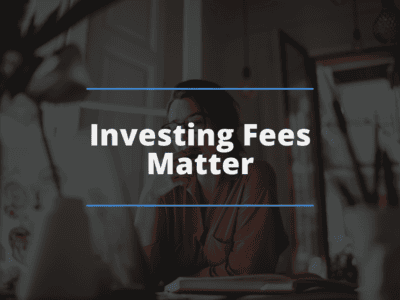When you start investing, you’re likely focused on choosing the right stocks, funds, or tracking exciting market trends. And that’s understandable! But there’s a less glamorous, yet absolutely critical aspect to consider: investing fees. These fees might seem minor compared to the allure of potential returns, but their impact over time can be staggering. Small percentages subtracted from your returns year after year significantly reduce your portfolio’s long-term growth potential.
Understanding the world of investing fees is key to making informed investment decisions. Think of it as protecting your hard-earned money and maximizing its potential. Let’s dive in!
Common Types of Investing Fees
Knowing the different disguises of investing fees is the first step to keeping tabs on them. Here’s a breakdown of the most common types you’ll encounter:
- Management Fees: Actively managed investments like mutual funds or certain ETFs have portfolio managers who select or adjust holdings. Their expertise comes at a cost – management fees. These are typically expressed as an expense ratio, an annual percentage of your assets in the fund. For example, a 1% expense ratio means you pay $10 for every $1,000 invested.
- Transaction Fees: Buying or selling stock, bonds, or funds frequently trigger transaction fees. These can be a fixed commission per trade or charged on a per-share basis. Seemingly small, these fees bite away at your returns with every transaction.
- Account Fees: Some investment platforms or advisors charge maintenance fees, inactivity fees, or even fees for withdrawing your own money. It’s essential to be aware of these potential charges before choosing a provider.
- Advisory Fees: If you employ a financial advisor, they’ll charge fees for their services. These can be percentage-based (a portion of your assets under management), hourly, or via a flat retainer.
The Underestimated Impact of Investing Fees
You might think, “a 1% or 2% difference in fees isn’t a big deal.” But over years and decades, those small percentages have a shockingly negative impact on your portfolio.
- Example: Let’s say you invest $10,000 with an average annual return of 8%. After 30 years, that investment would grow to about $100,000. Now, a seemingly small 1% annual fee reduces the final amount to approximately $76,000 – a loss of $24,000!
- Compound Interest Erosion: Fees don’t just eat into your initial investment–they gnaw at the power of compound interest. That “lost” money could have been earning returns itself, leading to an even bigger difference over time.
- Opportunity Cost: Imagine what you could do with that extra $24,000 (from the example above). That’s potentially another substantial investment working for you, instead of being lost to investing fees.
Reducing the Burden of Investing Fees
The good news is, you don’t have to be at the mercy of fees! Here are strategies to minimize their impact:
- Index Funds & ETFs: Opting for index funds and ETFs (Exchange-Traded Funds), known for passive investing, is a fee-friendly strategy. Instead of paying for portfolio managers to try and beat the market, these funds simply track an index, resulting in significantly lower fees. [Learn more about index investing: https://www.investopedia.com/terms/i/indexfund.asp ]
- Discount Brokers: Many online brokers offer low-commission or commission-free trading, making it cost-effective for frequent trades or regular contributions. [Check out a list of low-cost broker options: https://www.nerdwallet.com/best/investing/online-brokers-for-beginners]
- Negotiating with Advisors: Don’t be afraid to discuss fees with financial advisors, especially if you have a substantial portfolio. An advisor’s priority should be maximizing your returns, and that includes a fee structure that aligns with that goal.
- DIY Investing: If you’re comfortable with research and managing your own investments, consider a self-directed approach. Doing so eliminates certain advisor fees. However, it’s critical to have the knowledge and dedication to manage your portfolio effectively. If you are interested in how a professional, fiduciary financial advisor can help, start here.
Key Takeaways
Investing fees might not be the most exciting topic, but their impact on your long-term wealth is undeniable. Armed with the knowledge from this article, you can take proactive steps to protect your investments from excessive costs. Remember:
- Fee awareness is power: Understanding the fees you pay is the first step toward controlling them.
- Comparisons are key: Don’t choose investments based on returns alone; always factor in the fee structure.
- Seeking help is smart: If you feel overwhelmed, a qualified financial advisor can help assess your investments and manage your overall fee burden. Reach out to Einstök Wealth Management to explore our solutions: https://einstokwealth.com/investment-management/
Investing intelligently involves both maximizing returns and minimizing costs. By taking a fee-conscious approach, you set your investments up for greater success in the long run!
